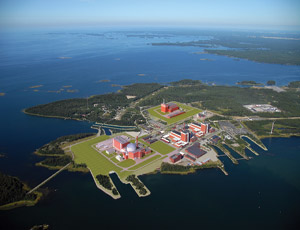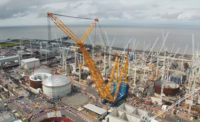Sweden’s parliament narrowly voted on June 17 to end its long moratorium on new nuclear plants. The move follows last month’s separate decision by Finland to approve in principle proposals for two new plants.

With 174 votes in favor and 172 against, the Swedish parliament reversed a 1980 decision to close two reactors and halt all new nuclear construction.
Concerned about carbon dioxide emissions and reliance on imported fossil fuels, the government initiated new legislation allowing more nuclear power last year.
Thirty years ago, public opinion was against nuclear power. Further, the Swedes were under pressure from Denmark to close the Barseb�ck plant, near Malmö, which is only about 20 kilometers from Copenhagen.
The two 615-Mw boiling-water reactors were shut down by mid-2005.
In compensation, the government gave the plant’s owner, now E.ON Nordic A.B., Malmö, shares in the country’s remaining nuclear installations. The 10 operating plants generate over 40% of the country’s electricity, according to the World Nuclear Association.
The parliamentary vote “is a very important step,” says E.ON spokesman Torbjörn Larsson. The company is reviewing the future of its oldest reactor, at Oskarshamn, and the new legislation makes its total replacement an option, he says.
Technical leader E.ON has a 34% stake in Fennovoima, the company behind one of Finland’s new nuclear plants. Fennovoima is planning a 1,500-Mw to 2,500-Mw plant either at Pyh�joki or Simo in the north.
Fennovoima still has a decision pending about whether to use Areva’s 1,700-Mw evolutionary power reactors, 1,250-Mw Kerena reactors or Toshiba’s 1,600 advanced boiling-water reactor. The company aims to have the plant in operation by 2020.
The Finnish utility Teollisuuden Voima Oyj, Helsinki, also secured governmental approval in principle for its proposed new unit at Olkiluoto, Eurajoki. The Olkiluoto 4 plant could be of the boiling-water or pressurized water type.
Currently, at Olkiluoto, TVO is building what would have been the world’s first operational EPR built. Originally due for completion earlier this year, the Olkiluoto 3 unit is now scheduled to start operations in 2013.
Notes a TVO official, Olkiluoto 3’s turnkey contractor, the AREVA-Siemens consortium, “has informed us that most of the works will be completed by the end of 2012.” The project is now running neck-and-neck with the French unit that started construction a year later, in 2006, at Flamanville.
Not all European news has been good for the nuclear industry.
Plans for a 15,000-tonne reactor-vessel forging press in the U.K. were undermined on June 17 by the new government’s withdrawal of a $120-million loan offer.
Sheffield Forgemasters PLC., Sheffield, had secured the loan from the previous Labor administration. But the financing fell victim to the government’s increasingly stringent deficit reduction program.
Currently, very large forgings are available only from Japan Steel Works Ltd., Tokyo. France’s AREVA N.P. is investing in a rival press at its Le Creusot facility.




Post a comment to this article
Report Abusive Comment